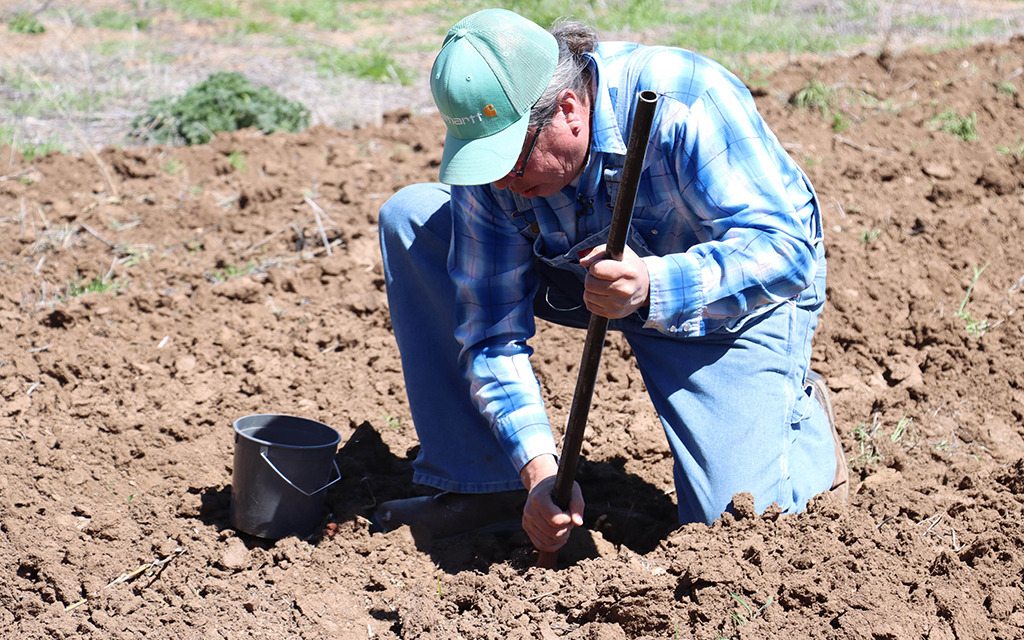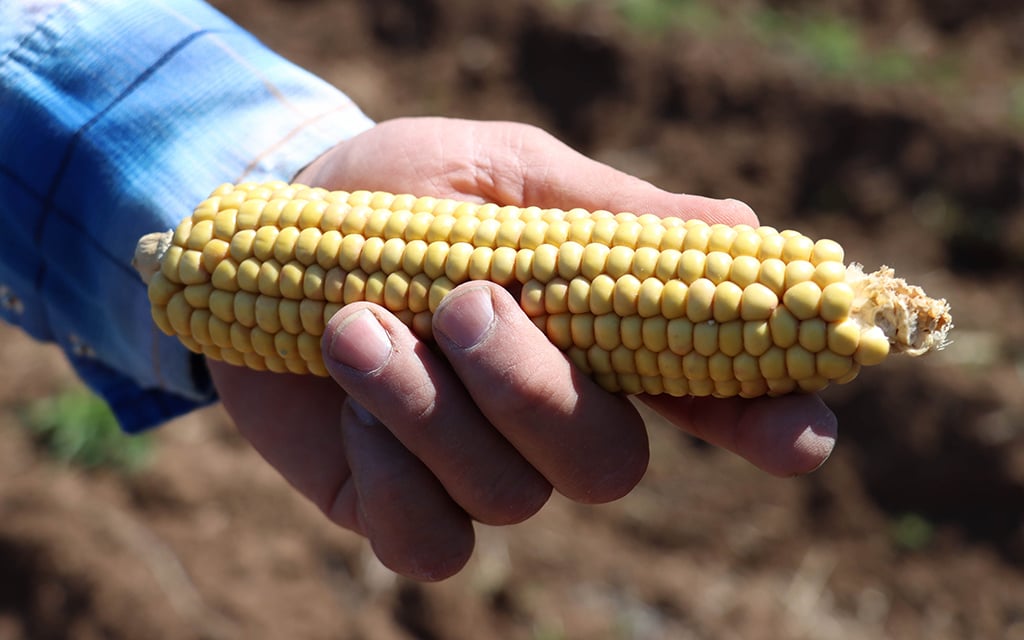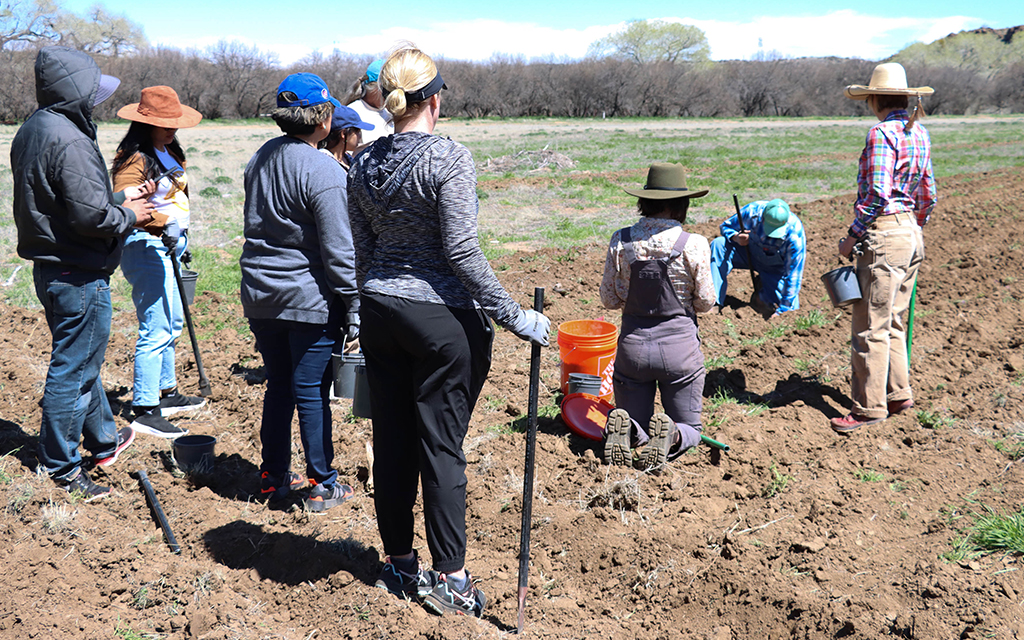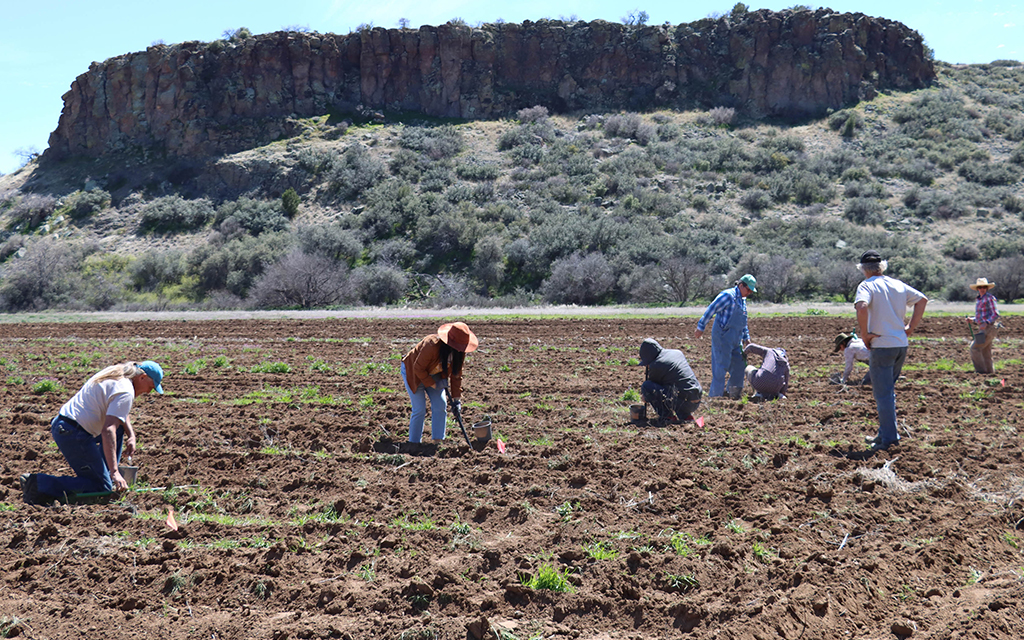MAYER – Some Indigenous farmers are trying to bring traditional food back to their communities.
Michael Kotutwa Johnson, a farmer from the Hopi Tribe, is focusing on bringing Hopi corn back to the dining table – not only for the health benefits but also to connect his people to their culture.
Johnson, who also is a faculty member at the University of Arizona’s School of Natural Resources and the Environment, refers to corn as “our mother.”
“Corn represents our mother, and we need to take care of her so she can take care of us,” Johnson said. “That’s one of the main reasons I do what I do – because I want to give back to the community more than I give back to myself.”
His mission is to grow thousands of ears of corn at Arcosanti, an experimental town in Mayer, about 70 miles north of metro Phoenix, and then make it accessible to the Hopi Tribe.
Drought has made it difficult to grow corn on Hopi lands for the past few years, so it has not been widely available.
Johnson partnered with Arcosanti to test corn growth on an acre of land to see if Hopi corn would successfully grow 175 miles away from the Hopi Tribe, which is in northeastern Arizona.
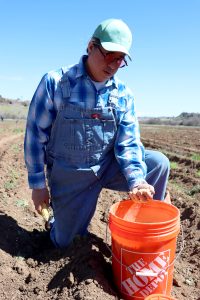
“When I talk about my corn it’s like my mother and we treat it as such,” Michael Kotutwa Johnson says. (Photo by Sierra Alvarez/Cronkite News)
A group of educators from across Arizona traveled to Acrosanti last month to learn about how to sustain Indigenous crops and plant hundreds of seeds across the acre of land with Johnson.
Many of the teachers who went to help grow the Indigenous corn knew little to nothing about growing the crop or using Hopi techniques, which include using a stick to wedge a hole for the corn and place damp dirt over the seeds.
Danelle Meade, a member of the Navajo Nation, is an ancient civilizations teacher at San Carlos Middle School on the San Carlos Apache Indian Reservation. She said she knew little about growing corn but understands the importance of corn in Indigenous culture, including for making prayer meal and rattles that are used in ceremonies. After planting the seeds and learning new techniques, she plans to teach what she learns to her students.
“I always tell my kids, ‘There was no Bashas’, Walmart or Fry’s a long time ago. Everything was grown and harvested by the people,’” Meade said.
Johnson wants to keep the tradition alive due to corn’s connection to culture and its health benefits.
The corn has 10 to 15 times more mineral content than the corn found in grocery stores, he said. He believes if corn is more accessible to the Hopi people, they will see an improvement in health, and he hopes to make that possible. If the corn grows successfully at Arcosanti, Johnson plans to take the corn home to Hopi tribal lands and distribute it to the community, while keeping some as seed corn for the next season.
Johnson’s Hopi corn effort is one part of a larger seed restoration project he’s working on that includes other Indigenous crops.
“I am also trying to find ways to grow things on a bigger scale to introduce them back into the Native communities where they came from, to help with things like heart disease, diabetes, obesity and things like that, that have been plaguing us for a number of years,” Johnson said.

